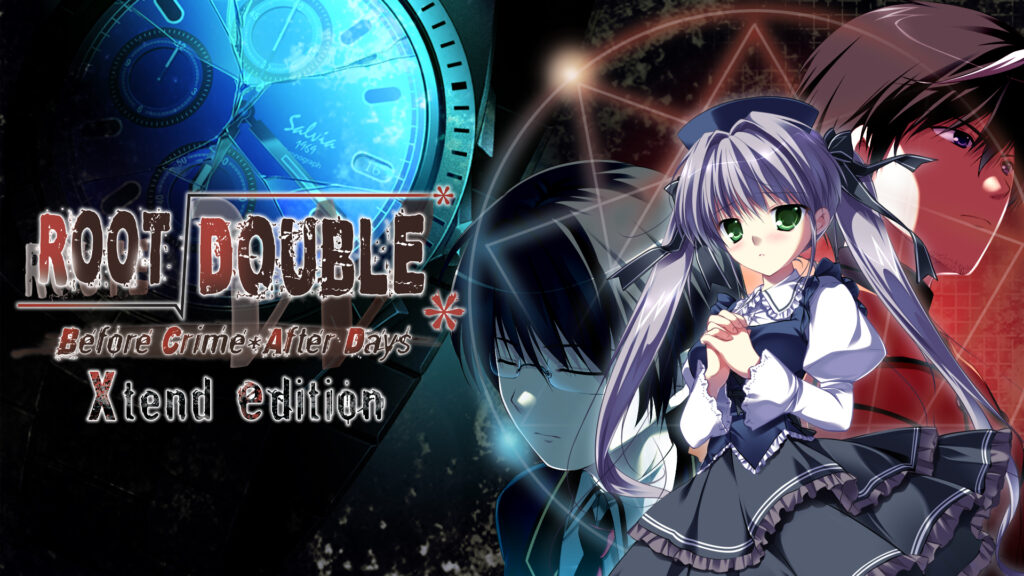
I thought I knew what I was getting into with Root Double-Before Crime * After Days- Xtend Edition. Here’s a visual novel from Regista and Sekai Games that appeared to be loosely based on the Fukushima Daiichi disaster with multiple pathways and some drama. But every bit of that preconception was wrong. In point of fact, Root Double (which I will refer to the game by from now) was conceived well before the Tohoku earthquake that devastated Japan and actually delayed because the content was too close to reality. As such, there was an additional ending written for the game which generates the ‘Xtend Edition’ suffix at the end of the title. And like my preconceived notions about the origins of what I was about to play, Root Double smashes your expectations and leaves you surprised as it shifts in unexpected directions to create a surprisingly immersive visual novel.

Root Double is a literal double entendre. There are two initial branches to the storyline, one that takes place after the nuclear meltdown at the LABO facility in Rokumei City and one that takes place before it. Route A takes place immediately after the meltdown, hence the games title section ‘After Days’ which can be shortened to ‘AD’, the old way to refer to modern time periods. AD is also the name of the drug that magically keeps the cast alive in Route A by completely cancelling out their radiation exposure with repeated doses. The second branch, Route B, happens ‘Before Crime’ or ‘BC’ and focuses on students from Rokumei that become embroiled in a terrorist plot. This storyline also focuses somewhat on an ability called ‘BC’ or Beyond Communication that allows for limited telepathy in humans. What initially just seemed like a long, poorly translated name takes on a whole new meaning within a few hours of starting Root Double!

It’s probably best if you being the game on Route A and go forward in order. After the initial two pathways, there are three additional routes that flesh out the game with a ridiculous amount of content. Seriously. To complete Root Double, you’ll be looking at a solid 30 to 40 hours or more depending on your reading speed. Contained within that are a variety of bad endings, some unexpected and some unexpectedly horrific. Route A alone features a whopping 19 different endings and you can hit your first one within minutes if you don’t pay attention to the Senses Sympathy System or SSS (Yeah, there are some acronyms at work here). There’s a lot more going on here than just a school kid’s slice of life experience or some rescue workers being trapped in a nuclear meltdown.

Speaking of the Senses Sympathy System, this is what Route Double initially presents as the format for your choice paths within the game. SSS functions as a trust system, allowing you to raise or lower your faith in individual characters honesty at key moments in the plot to affect the outcome of situations. While the game explains SSS, it doesn’t do a great job of it and there’s nothing to indicate what your choices do until you abruptly die and have to start over from your last save or quick save. SSS choices are color coded to blue, yellow, and red depending on the severity of the choice and red choices imply that your demise is imminent. Choose, but choose wisely. Unfortunately, it seems like your subtle tweaks to trust levels have limited reactions and only major changes tend to shift the storyline, but it’s a neat system even if feels a bit odd and slows down the narrative more than it probably should. That’s especially true once you come back to those same choices in a later playthrough and just get to make regular branch decisions if you’ve managed to achieve the preferred ending, implying that SSS probably wasn’t necessary in the first place.
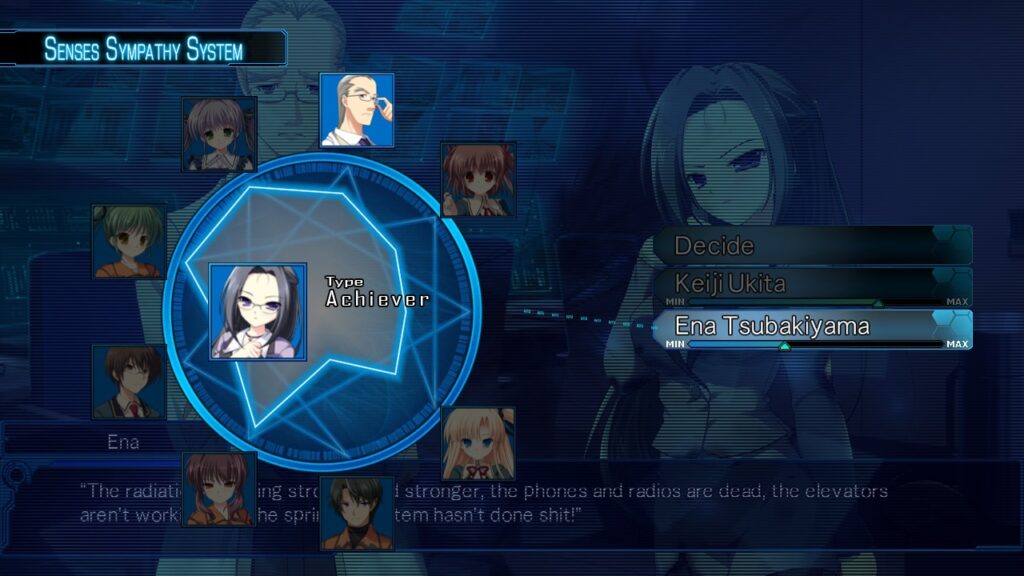
Regardless, the SSS is the vehicle that initially drives the game. In Route A you play the captain of a rescue team, Watase Kasasagi. You’ve been struck with amnesia due to the incident and have no idea what’s going on, much as any player new to the game would. It’s a good way to introduce everyone and all the background information, even if amnesia is a tired plot vehicle and somehow Root Double makes even this seem reasonable and function better than it should. There’s background information a plenty here too, one of the biggest issues with Root Double. The sheer amount of background exposition is intense here, with detailed explanations of the AD drug, various nuclear plant functionality explanations, explanations of the latent BC ability and so very much more. Honestly, after a bit of play, I ended up looking up the actual science behind radiation poisoning, how many millisieverts (mSV) humans can absorb without dying, and a host of other background information. Root Double does an excellent job of sticking with the science, at least for the parts of the game that are grounded in facts. Also, I now know more than I thought I would about the basics of radiation poisoning and if you play through the game with that knowledge, it does a hell of a job of making you incredibly uncomfortable as the characters skirt a horrible and debilitating death with their anti-radiation drugs.
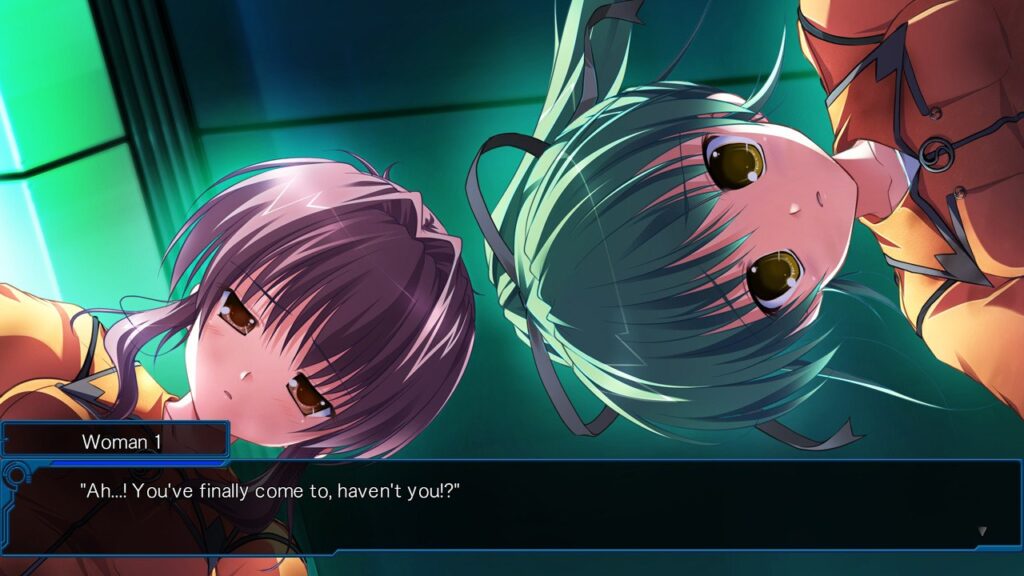
If there’s one thing about Root Double that’s uneven, especially in the opening hours, it’s the pacing. Be prepared for a deluge of text that slows down the excitement and drip feeds you bits of plot sentence by sentence for a fair amount of time. However, when things do get moving, they get moving! Murder and mayhem abound and no one is quite who you think they are. The way everything is addressed in the narrative is outstanding and just when you think things are headed down a specific path, the tropes shift and the entire plot pivots.
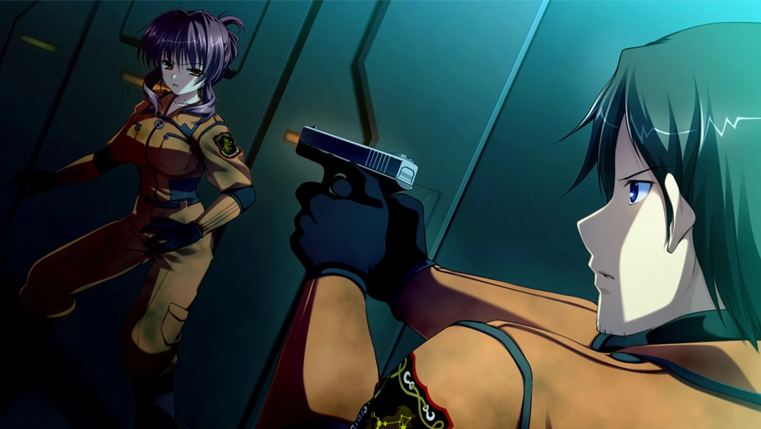
The overall design of Root Double is outstanding. It utilizes a variety of common story elements from the genre to lead you down the path of the story, only to find out that your expectations were what had you miss the obvious in the first place. As Watase, you’ll have no idea what’s going on and people’s reactions are never quite what you would expect them to be, even in an emergence. Later, as the student Natsuhiko, you’ll see those same events from a new perspective, enlightening you to what was actually happening, a far cry from what you would initially expect. Eventually, the two storylines meld into a cohesive whole and the full story is finally and satisfyingly revealed. Everything about Root Double seems initially sophomoric but eventually you’ll realize that each event and conversation is carefully crafted to drive the narrative in unexpected ways to a surprisingly satisfying conclusion.
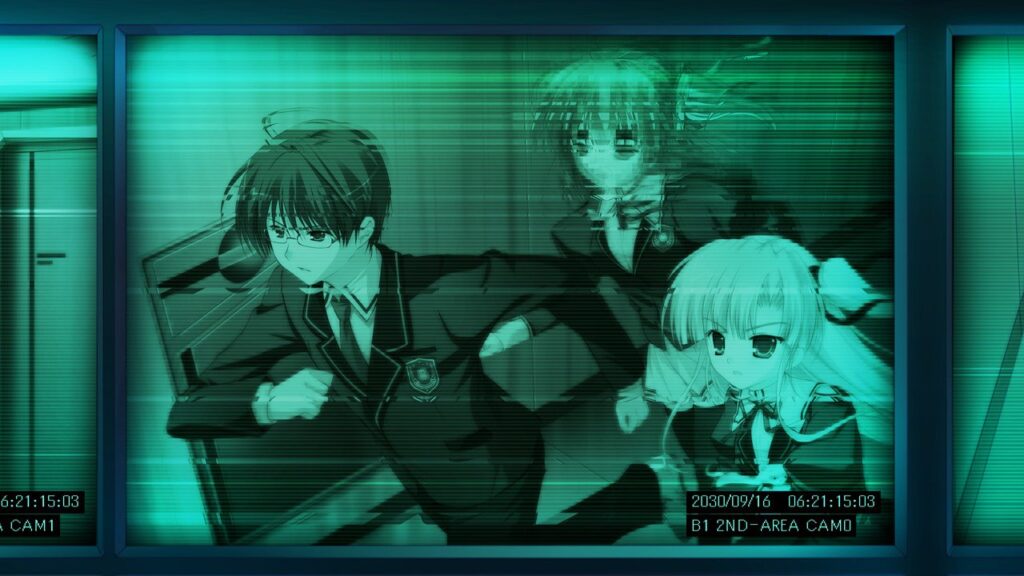
Mechanically, Root Double is pure excellence. The gameplay is intuitive, the menu systems are responsive, and the entire game presentation is clean and polished. This is absolutely a premium visual novel, albeit one that’s definitely from a few years ago since the lack of character movement and limited backgrounds definitely feel a bit dated. It’s easy to save anywhere at the touch of a button or speed up the dialogue at hyper-speed to rush to a decision point after a failure if you choose to play that way. There are hotkeys available with the ZL button, and as you learn information, it’s added to a Tips section in the menu system, much like the information in Steins; Gate. Even going back to check previous dialogue is great, with the game allowing you to not only read the text and replay the audio but actually skip backwards to a chosen scene and start playing from there! Additionally, touch support has been thoughtfully enabled, a very hit or miss thing on the Switch and something that should absolutely be mandatory for all VNs.
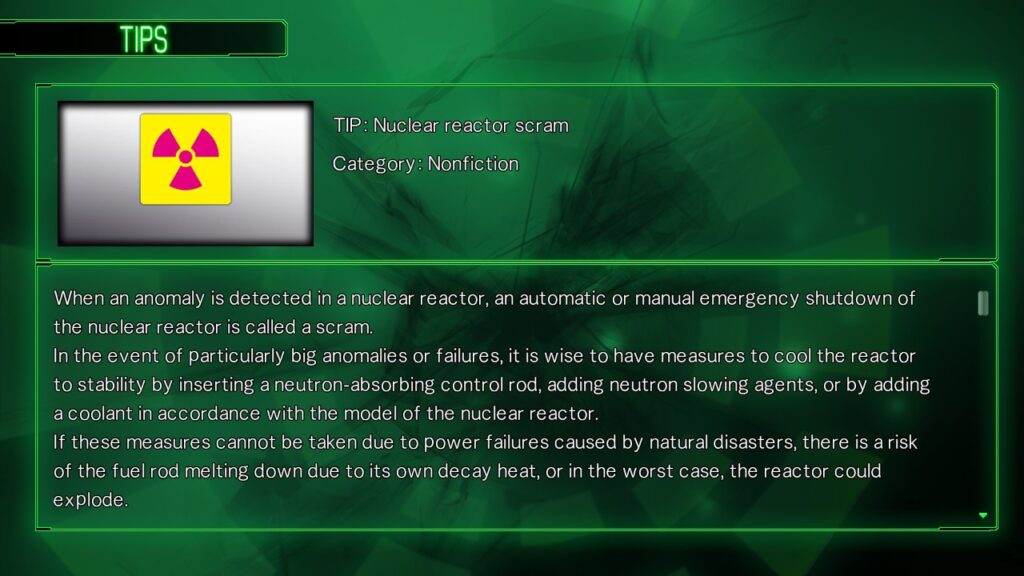
The Switch is the perfect vehicle for Root Double, with great presentation quality on both docked and undocked modes. Initially, the game was released on Vita for Western audiences, but the larger screen and ease of play on a full size TV make the Switch the superior version. While the visuals are crisp and well-drawn, they won’t win any major awards. Character models are quite good, but the mostly static imagery really makes Root Double show its age. All of this is to be expected from a game that originally released in 2012 in Japan, but there are other VNs from the same era that did look a bit nicer. The music for Root Double seems similarly slightly dated. Often the soundtrack is a bit heavy-handed and overdramatic, but it’s a solid if not entirely memorable composition. The inclusion of complete Japanese voicework is a nice touch and the voice actors are quite good, but eventually, I ended up turning them off in the options setting because I don’t speak Japanese and I read faster than they can talk anyway. As a whole experience, the Root Double visuals and soundscapes are a solid bedrock for the plot to unfold onto, and that’s the real meat of the game.
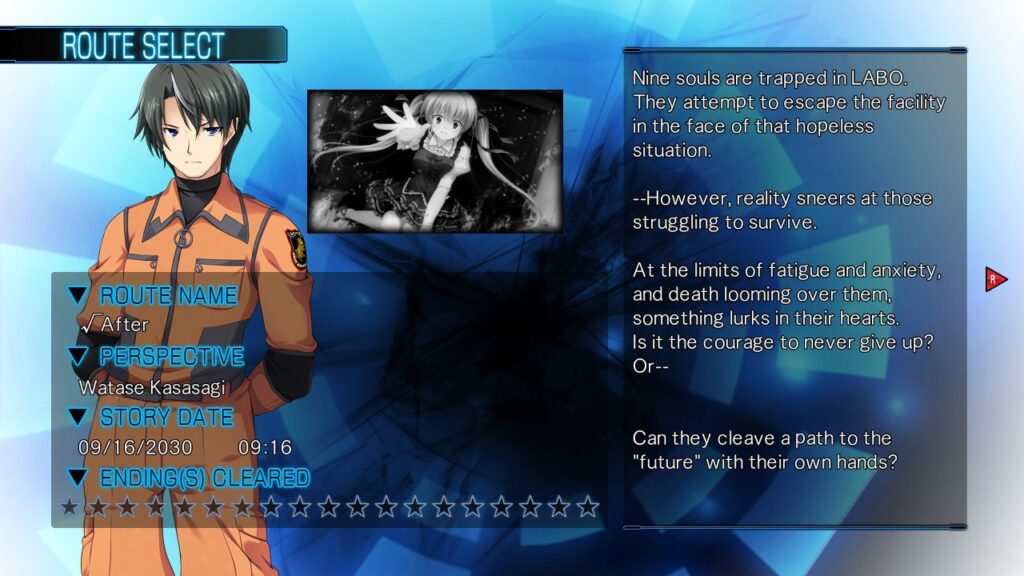
If you’re not sure about Root Double-Before Crime * After Days- Xtend Edition, fear not. As long as you like visual novels and some sci-fi, you’ll love this one. Root Double is an absolute labor of love and a game that no visual novel fan should miss. The price of admission is well worthwhile at just under $50 and you’ll get a hell of a story wrapped up in a clean, approachable package that allows for an excellent and intuitive experience. Now if only I could learn to use BC…

This review is based on a digital copy of Root Double-Before Crime * After Days- Xtend Edition provided by the publisher. It was played on a Nintendo Switch in both docked and undocked modes and was excellent in both. Root Double-Before Crime * After Days- Xtend Edition is also available for the Playstation Vita and Windows on Steam. Spoilers were purposely avoided for this review, both in text and images.

